Finally, don't miss the NACHMO Boston Concerts at the Dance Complex on Friday, February 9th and Saturday, February 10th! N: I am so excited to see group concerts invest in forms outside the traditional modern and ballet! Can you talk about what is that first drew you to Bharatanatyam? D: I started learning dance when I was 5 years old and at that point I was just fascinated with the story telling aspect by using facial expressions and hand gestures. I had no idea of any movements that were involved. I was just happy to stomp my feet. Since I grew up in Bangalore, India, I was surrounded by Indian culture and I was constantly in touch with classical music and dance. My family was full of connoisseurs of classical arts, probably all these things put together has helped me fall in love with Bharatanatyam. N: Since all of our relationships with dance change over the years, what is it that you love about Bharatanatyam today? D: If you had asked me the same question 10 years ago, I would have said the energy that this dance form brings in is what I love. The ‘Nritta’ or dance movements was what I loved the most. Today, I would say, ‘Abhinaya’ or the conversation with the audience through facial expressions, hand gestures and the story telling is what fascinates me the most. Bharatanatyam has such a vast language that you can easily present different characters of different eras and of different stories with ease. Even though this art form is ancient, it still can connect to today’s generation. You can portray a piece on Devadasi from 1900s to a current issue of either global warming or Equal rights. N: You grew up in India. What brought you to Boston? D: Marriage brought me to Boston. I am glad I came here! Boston has an eclectic mix of people and I got to see many many dance forms. I saw such passionate dancers, and helped me see the uniqueness and differences from my own dance form especially when I was teaching at Dance Complex.
N: What changes in your process to build a piece in such a short time span (one month)? How long do you usually take to create work?
D: It usually takes me about a week or two to choreograph a single 5-10 minute dance piece. The relatively short time span of one month that NACHMO provides would therefore have been sufficient if I were just doing a single piece. However, as I wanted to carefully pick a couple of pieces to showcase the breadth of my dance form, the time span of one month had to include selection of songs and choreography, which was a challenge.
1 Comment
Follow along on social media to get the prompts and see some incredible dances! Share your own videos (no previous choreographic experience required!) using the #MonkeyhouseNACHMOChallenge hashtag in order to be featured! Finally, don't miss the NACHMO Boston Concerts at the Dance Complex on Friday, February 9th and Saturday, February 10th! N: You are interested in dance and science. Can you talk about how those two things come together? M: Definitely. Ever since I was little I have been fascinated by science - loving rocks and cloud formations. Later, I became invested in physical therapy as a career through anatomical courses and various dissections, which lead me to self-design a major in Dance Kinesiology at Mount Holyoke College. Therefore buried in Gray's Anatomy and scientific textbooks, I found a love of physics through translating principles to dance. Albert Einstein inspired my first choreographic plunge in 2014 as well as Thomas Edison’s phonograph and motion picture inventions fostered my curiosity with science and art. In each new creation, I hope to further explore this kinetic interaction and stimulate the perception of dance as a scientific sport.
N: Can you talk about the dancers you’ll be working with? What are you looking forward to and what are the challenges of working with this particular group? M: Yes, they are great! I am working with Katy Esper and Nora Buonagurio. We have been dancing together since 2015, therefore there is already a foundation of collaboration and trust. I am looking forward to being on the sidelines and watching these dancers take lead of the material. The challenge of working without a soundscore is that there will be no musical cues or counts and therefore Esper and Buonagurio will need to be extra aware to clearly converse physically and verbally within the space. N: Who are some of your favorite choreographers? M: Some of my favorite choreographers include Jiří Kylián for his harmonic combination of fragile movements juxtaposed with a sharp attack. Adele Myers prompted my love of athleticism and risk-taking. Jessica Lang inspires me with her brilliance in installation and innovation in each new work. Ohad Naharin pushes me to create work that is socially and culturally poignant. Andrea Miller allows me to be ok with the quirky. And as always, Fred Astaire has always been an inspiration; a brilliant technician, incorporating clean and syncopated rhythms. N: What changes in your process to build a piece in such a short time span (one month)? How long do you usually take to create work?
M: What I create for NACHMO will be a rough draft of an idea. I usually spend 1- 3 years on a piece. This includes many smaller showings and refinings of sketches, which allow me to spread out in as many directions and as quickly as possible. From these reworkings, I will compress the dances into a comprehensive whole. I just had a big finale to the work I had been creating for the past year and a half. Therefore what I am creating for NACHMO 2018 is completely new!... movement - concept - dancers and collaborators. Excited to see where 2018 takes me!
Want to be part of National Choreography Month? Take the #MonkeyhouseNACHMOChallege. Every day we will be posting a new prompt on Facebook, Instagram and Twitter. Follow along on social media to get the prompts and see some incredible dances! Share your own videos (no previous choreographic experience required!) using the #MonkeyhouseNACHMOChallenge hashtag in order to be featured! N: Can you talk a bit about how Evolve Dynamicz came about? How would you describe your work? L&N: In the summer of 2015, Lisa Costello and Nicole Zizzi met by chance through a project put together by a local Boston choreographer. In October of 2015, Evolve Dynamicz was established, with the hope of creating a repertoire to share the mutual passions for life and movement. In September of 2016, Evolve brought on their first set of new members and has continued to grow into what they are now. Evolve Dynamicz has become an oasis for this unique group of strong willed people— as they each face their own individual life challenges, they support each other and find common ground through the arts of dance, choreography, and movement. As artists, we seek to confront the challenges of a millennial life with a sense of openness and vulnerability. Our work embraces these challenges with curiosity, intimacy, playfulness, and a deep- seated passion for movement. Our interests in improvisational composition, site specific choreography, and collaboration with our dancers are brought forth in our choreographic processes. With this, we aspire to continually experiment with new vocabularies, ideas, collaborators, and mediums of expression— we are committed to sharing our passion of dance with audiences in all spaces, of all types. N: How do you and Nicole divide responsibilities within the company? Do you generally choreograph together? L&N: Together we make the decisions and final choreographic choices. We meet weekly to make sure we are on track administratively as well as in the studio. Our choreographic process varies with each piece we do! For our last show SPACES, we did each piece collaboratively, but recently we decided to explore choreographing separately and seeing how our work compliments each other. We’re still a fairly young company, so we are doing a lot of experimentation. :)
N: What changes in your process to build a piece in such a short time span (one month)? How long do you usually take to create work?
L&N: With a short time span, we need to streamline things a bit, so we will do less of our improv work that would normally help us build a piece and we will focus more on our choreographic notation. The notation helps us sort out choreographic ideas on paper outside of the studio. It is a way for us to step back from getting overwhelmed with movement possibilities and look at things with a more abstract eye. N: Who are some of your favorite choreographers? L&N: William Forsythe, Andrew Winghart and Justin Peck
N: You are very open about living with Cystic Fibrosis and raise awareness about it in your work. Can you tell us a bit about Continuing Fluctuations; a piece you created about living with invisible chronic illness? H: Continuing Fluctuations is actually a collection of work that we are hoping to share in a full evening performance in May. Each piece explores a different aspect of life with chronic illness. We have been trying to tackle a little bit of everything. Current inspirations include facing feelings of anxiety, finding your place in the world and dealing with outside perception. I strive to create work that can reach an audience on an emotional level regardless of their previous experience with chronic illness. Everyone can relate to these feelings because they are innately human. If people can make the connections on an emotional level, maybe they can start to understand and be more empathetic in their daily lives. You never know what someone is silently struggling with. The piece that we are working on for NACHMO is an extension of this work starting to explore the idea of losing independence. Everyone is faced with the prospect of becoming dependent upon family members for care. For most people it is a temporary situation and does not become permanent until very old age. People living with chronic illness, even young, otherwise independent people, often find themselves in positions where they must rely on the support of others to help with everyday activities. Sometimes this dependence is for a short stretch of time just to recover. Other times this dependence can become permanent and last for years. In this piece, I am hoping to capture what it feels like to loose that independence. N: Several members of Monkeyhouse live with invisible illnesses. Thank you for tackling such an important topic! What has the response been to the work? What do you feel you’ve learned through the process of creating it? H: The overall response has been positive, but like everything in the arts we need more support to keep the project going. We are currently running a fundraising campaign to support the production costs of the May performance. I hope that seeing a glimpse of what we are working on as part of NACHMO, people will step up and support our small company. Creating this work has been an amazing experience. With every new idea comes a new opportunity not only to explore movement, but also to explore within myself what is at the root of the idea, what am I actually trying to say. I think that is true for any artist working through his or her own process of artistic expression. Each idea I have presented has been a part of who I am for a long time. They are snippits of thoughts that have shaped the person I have become and how I have decided to live my life. They are all things that people living with chronic illness are often faced with every day. We are forced to work through these ideas and make life- altering decisions long before our peers. In exploring these ideas in a public space, maybe we can start a conversation. N: What are you most excited about for this year’s National Choreography Month? H: I am most excited about seeing what other choreographers have created in such a short period of time. NACHMO is always a great opportunity to touch base with the dance community and see what everyone is doing.
N: Who are some of your favorite choreographers?
H: I think my favorite at the moment is Wayne McGregor. He did a Ted Talk back in 2012 about his choreographic process. It was really interesting to see how he creates abstract movement that is inspired by seemingly mundane things. I like the way his work is modern and yet uses the lines of ballet to create interesting shapes. by Nicole Harris I love when we get to interview people more than once! It has been a lot of years since we last talked to Lacey Sasso and many amazing things have happened! She's here to tell us about herself and her work with NACHMO Boston this year! Learn more about her here! To learn more about NACHMO Boston you can find them on Facebook and Instagram! You can also support this year's NACHMO Boston programming here! Want to be part of National Choreography Month? Take the #MonkeyhouseNACHMOChallege. Every day we will be posting a new prompt on Facebook, Instagram and Twitter. Follow along on social media to get the prompts and see some incredible dances! Share your own videos (no previous choreographic experience required!) using the #MonkeyhouseNACHMOChallenge hashtag in order to be featured! Finally, don't miss the NACHMO Boston Concerts at the Dance Complex on Friday, February 9th and Saturday, February 10th! N: We interviewed you way back in 2013 when you were part of Against the Odds. (Read that interview here!) It’s great to talk with you again! So much has happened in the last five years! In 2014 you started your own company. How did that come about?
N: In 2013 you were splitting your time between Boston and New York. Are you working in both cities? L: Following that period of time, I moved to London and spent the last two years teaching and performing overseas. It was a brilliant opportunity to see how dancers in other nations train, to work with a diverse student population, and to perform in some incredibly creative work. Since moving back to Boston this fall, I have refocused on how I can be a part of and engage in the local dance community. We have so many wonderful programs and opportunities here in the city! I do still have connections in New York and am hoping to collaborate with a few of my artist friends to create work together soon. Currently, I am looking at performance opportunities in both cities, however, I consider myself to be Boston-based now and am so excited to be participating in NACHMO and producing on a new shared show, Deeply Rooted which is being presented in February. N: What are you most excited about for this year’s National Choreography Month? L: NACHMO has a wonderful way of kicking my winter blues away. Even today, I was trying to plan rehearsal and feeling rather uninspired, then I got on instagram and was instantly excited by the phrases other participants are coming up with. One of my favorite things about NACHMO is that the prompts continuously challenge me to move in ways that I ordinarily would not. I also love how the whole dance community comes together to share in this creative challenge. The work that is produced is exciting, innovative, and inspiring.
N: How long do you usually take to create work?
L: Completely depends on the piece. Some pieces come out in 4 hours and others take 4 months. For me, it can depend on how clear my vision is for the work. I love that NACHMO inspires me to focus and get a clear vision in a short amount of time. It can be so refreshing to see a finished product after such an intense period of creativity. N: Who are some of your favorite choreographers? L: Trisha Brown, Jose Limon, Michelle Dorrance, Akram Khan, Hofesh Shechter, Tracie Stanfield, Melody Squire…. I could go on and on!
To learn more about NACHMO Boston you can find them on Facebook and Instagram! You can also support this year's NACHMO Boston programming here! Finally, don't miss the NACHMO Boston Concerts at the Dance Complex on Friday, February 9th and Saturday, February 10th! N: You are working in both New York City and Boston. How does that work? What is keeping you in both cities? G: Once I left Boston to move to New York to pursue my MFA in Dance full time, I knew I wanted to maintain a presence in both cities. I was excited to see what opportunities NYC had, but I also didn't want to forsake my Boston dance community that had provided so much support that lead me to my pursuit of graduate studies in dance. Luckily, the commute is easy enough, and since my family is located in the greater Boston area, I have been able to come back for choreographic showcases, master classes, and performances. It is my hope that no matter where my career takes me, that I always have roots in Boston. N: What are you most excited about for this year’s National Choreography Month? G: What excites me about this year's NACHMO showcase was that I took upon the task to free myself from self-editing and overthinking structure. As I am working out concepts for my choreographic MFA thesis for later this spring, I wanted to present movement phrases in their raw and purest form as a way of exposing the bones of creating a dance.
N: Who are some of your favorite choreographers?
G: The greatest inspiration to my work is Trisha Brown, in particular her works "Newark," "Set and Reset," and "Sone of Gone Fishin'." I am also a huge fan of Merce Cunningham, Lucinda Childs, Beth Gill, Jodi Melnick, and Heidi Henderson. All of the aforementioned choreographers have brought intrigue and insight to the field that I hope to emulate in my work in some capacity. N: You’ve had a busy career so far. What is some advice you can offer aspiring choreographers? G: My greatest piece of advice I could give to aspiring choreographers is don't wait for an opportunity to come to you, go out and make it for yourself. It seems cliche, but it was integral to my success as a dance maker. When I first moved to Boston, no one knew who I was, so I had to really pound the pavement to make my mark. I took classes, went to performances, and networked with those in the community to make myself known. Furthermore, while it took a lot of fundraising, I presented a self-produced concert of my own choreography during my first spring in the city as a way of establishing myself. It didn't all fall into place at once, but each action lead from one opportunity, to another opportunity, and so on. It takes a lot of work, but it's worth it.
N: You have recently taken over NACHMO Boston. How did that come about? B: NACHMO Boston has been something I’ve enjoyed doing since its conception here in Boston. I have danced with Jess Muise, the former organizer, in a number of different settings. She approached me last year to let me know that she would likely be moving on and asked if I would be interested. I told her that with the support of Alive, I would be so excited to host such a wonderful dance opportunity in Boston! Alive looks forward to NACHMO every year and we’re thrilled we get to share that in a new way this year. N: What are you most excited about for this year’s National Choreography Month? B: I’m always excited to see what everyone else brings to the table and the work that’s created. The connections made are always fun, and it will be so exciting to experience all of it from the driver’s seat.
N: You come from a traditional jazz, tap, ballet, modern background. How does that range of styles impact the work you’re building today?
B: I think having a wide knowledge base allows me to pull from many different areas and helps me to not feel boxed in. Although I don’t perform Tap very often, it is one of my heart’s biggest pleasures, and I find that my Tap training comes out in my Contemporary choreography, particularly with how I hear and interpret music. N: What changes in your process to build a piece in such a short time span (one month)? How long do you usually take to create work? B: Creating work really varies for me. The piece that I started on Alive in July 2014 (“Shallows” or “The Pit”) took over two years (off and on) to complete. However, it is not uncommon for me to create something in a month if there’s an impending deadline. When I have to create work quickly, I usually start with an idea that is more fleshed out or less abstract. That way I either have already done some of the journey involving the concept of the piece, or there’s less of a complicated journey to take when thinking about the work. Then, I will usually create the choreography and teach it to the dancers. I usually incorporate less improv or collaborative building when there’s such a tight deadline, but I constantly talk to my dancers and other friends about the piece to gain ideas and inspiration. And sometimes, with a deadline, I just have to make a decision and can’t wait for the decision to come to me. One of my mottos is: “we can always change it later,” and I find myself reminding myself of that regularly during NACHMO. Nothing is set in stone, and sometimes making a decision actually gets you closer to what you want than sitting around waiting for the right answer to appear out of thin air. N: Who are some of your favorite choreographers? B: I’m a big Kate Jablonski fan. I love her combination of technique and artistry and unique athleticism. I also love Emma Portner and Michelle Dorrance. In addition, I’ve loved Wayne McGregor’s work that I’ve seen, and I adored Yury Yanowsky’s “Smoke and Mirrors” and hope to see more of his work. Plus, he and Kathleen Breen Combs have the cutest baby!
N: Can you tell us about the work you do with ECI on Location? E: Boston Ballet has a really fantastic community initiatives department, and ECI on Location is one of a few programs that they run (in addition to Citydance, Adaptive Dance, community workshops, etc.). We send teaching teams out weekly for the entire school year to 11 community sites in all different Boston neighborhoods, including after-school programs, community centers, and Boys & Girls Clubs. The goal is to make high quality dance education accessible across the city for children who are interested, and using it as a youth development opportunity as well - we balance beginner ballet technique with creative movement and composition, so it's a little bit of everything. I'm lead teaching at 3 sites currently, and it is a constant learning curve as an educator in adapting to different student needs and interests, different spaces, and different goals within the curriculum. I have some amazing students this year that make every single class an adventure, and this year we also have a performance opportunity so getting to make pieces with them has been a really cool process. I come from a strong contemporary, improvisational, and Laban choreological background myself, so finding ways to incorporate those elements and give students those creative tools has been a fun challenge for me as well! My goal is really to get my kids excited about dance, break some assumptions they might have about it, and to show them that building technique and strength is really just to give you more choices and options to express yourself! N: This fall you did an At Home Movement Practice + Journalism Project. Can you tell us a little about what you did and what you felt you got out of it at the end? E: Yes! I was actually a journalism major in college, and have always gravitated towards using text and writing in my choreographic process. I was struggling a bit this fall with an extra-busy teaching/work schedule and wasn't feeling very fulfilled in my own artistic dance practice. I was pretty religiously reading the New York Times and a few other outlets every day though, and had noticed such an uptick in the number of articles and topics I really felt compelled to read and understand (I think a lot of us probably felt that way in this insane past year or so!). So I came up with the idea to just take a few excerpts from what I read each day and to make a short movement response, either improvised or set, based on the words and images. It was a cool way to combine my interests and respond to all the intense things I was reading within my artform; to look at the language being used to capture our world in a slightly more removed way; and to dance a little every day in an attainable way and from a clear inspiration point. I'm actually using this idea to create my NACHMO piece as well! It seemed like an awesome fit for the whole concept of making-a-piece-in-one-month. I'm still in the movement generation portion of the process, and will be figuring out how best to weave things together/analyzing what kind of themes emerge (or none! it may end up being more a chain of vignettes). N: What are you most excited about for this year’s National Choreography Month?
E: This will be my first solo performance since 2014! So I'm pretty excited to take the plunge of being onstage by myself within my own work. It's such a different process than choreographing with other movers, and I'm definitely a little nervous but also looking forward to the experience. There are also a bunch of artists in the NACHMO lineup whose work I haven't seen before, so I'm really excited to check out their pieces and see what's going on in the Boston scene! N: Who are some of your favorite choreographers? E: My current list is all choreographers whose work I've actually gotten to see live in the last couple years, so am still just geeking out about. Hofesh Shechter (Hofesh Shechter Company), Andrea Miller (Gallim Dance), Pina Bausch (Tanztheater Wuppertal), Crystal Pite (Kidd Pivot), and Michael Keegan Dolan (Fabulous Beast Dance Theatre). They all combine crazy, beautiful, pure physicality with theatricality and narrative in such an incredible way, and all these performances felt like full on emotional experiences.
Want to be part of National Choreography Month? Take the #MonkeyhouseNACHMOChallege. Every day we will be posting a new prompt on Facebook, Instagram and Twitter. Follow along on social media to get the prompts and see some incredible dances! Share your own videos (no previous choreographic experience required!) using the #MonkeyhouseNACHMOChallenge hashtag in order to be featured! Finally, don't miss the NACHMO Boston Concerts at the Dance Complex on Friday, February 9th and Saturday, February 10th!
In addition to our own show, we participated in several festivals and performances. One of them was the Southern Vermont Dance Festival, which was our first performance opportunity outside of Massachusetts. We were proud to be featured in their Friday night gala and their Social Justice Walk. Finally, last year we formed a partnership with the Big Sisters Association! We are now in the middle of our second workshop series. These workshops invite girls, ages 9-13, to explore movement themes like positive body image and strong female friendships with the support of their Big Sisters. We are now a company of thirteen talented, powerful ladies, and we cannot wait to see what happens next! N: The story of where you got your name is pretty amazing. Can you share it? G: Of course! In 2012, Natalie Schiera and Gracie Novikoff were alumni choreographers for Dance Theatre Group at Boston University. They were lucky to create works with inspiring, empowered women, who weren’t afraid to convey stories through athletic, raw, grounded movement. After graduating, they wanted to bring this movement quality and message to the Boston dance community by creating their own company, but without what to name it. They researched synonyms for “empowered” or “strong” woman, but they found many had a negative connotation. One that stood out was Amazonian, which they decided to quite literally “flip the term on its head” - with that, ‘Nozama’ was born. N: It is very clear in reading about your company that powerful women are important to you. How have events in the last year like the Women’s March and #metoo impacted the work you make? G: The political climate of 2017 refined and redefined our message as a company. We have always been a collective of women, about women, who aim to create a safe space for women to share their stories. In 2017, this became even more important as our liberties as women felt threatened. At the same time, we were beyond excited and empowered by the Women’s March, the #metoo campaign, and other initiatives where female voices were heard. This is the time to stand up and speak out, and confidently share those raw and powerful stories that make us vulnerable, but strengthen and empower us in the process. In 2017, our choreography shifted to highlight our reaction to what was happening in the world around us. In particular, our piece “Bodies and Choices” (2017), represented female empowerment in this tumultuous time. Our dances in this 2018 season will continue to portray empowered, emotional, badass women who are coming into their own and ready to speak out in a time where others may not want us to. Our pieces will include a great deal of partnering, as we believe now, more than ever, women must empower one another in times of struggle, and celebrate one another in times of triumph. We are stronger and more powerful as a collective.
N: What advice do you have for emerging choreographers?
G: Experiment! Don’t be afraid to say whatever it is you want to say through dance - more likely than not, someone else is feeling the same way, but cannot figure out how to express it. If you have a concept in mind, try coming up with short phrases that convey the theme. Or try throwing on some music that evokes that specific emotion and see how your body moves to it. More often than not, our dances begin with a rough concept and a piece of music that we love. The music inspires the movement and often influences and refines the concept. We also always recommend that emerging choreographers find a mentor or established choreographer in the area to help get his or her feet off the ground. It is inspiring to work alongside other artists, and we have been so lucky to create some wonderful projects with other companies and choreographers in the area
Finally, don't miss the NACHMO Boston Concerts at the Dance Complex on Friday, February 9th and Saturday, February 10th! You can catch Kristin's performance on Saturday! N: You put together the incredible Tiny and Short concerts at the Dance Complex. How did you get involved with that? What is a piece you saw there that really impacted you? K: As a Project Lead at The Dance Complex, I regularly have the opportunity to coordinate a number of interesting creative programs on behalf of the organization. Tiny & Short in particular was the brain child of myself and Executive Artistic Director, Peter DiMuro. When meeting about another program, Peter looked at the calendar and said he didn't like how empty February was looking. I made a joke that I would plan him a show... and then that joke became a reality. I noted that I wanted to do a concert of all short pieces, and he noted that he wanted to bring Ten Tiny Dances back to The Dance Complex: thus, Tiny & Short was born, and after its success in February, The Dance Complex decided to produce it again this past fall. I really appreciated that in this second production, people really embraced the spirit of the show. In particular, I loved the piece that Rebecca McGowan presented in collaboration with Veronica Barron and Julia Friend. All of the Tiny dances were restricted to a 4X4ft platform stage, but these artists took the constraints a step further and squeezed an entire set design on the stage, complete with live music and an additional platform on which Rebecca performed beautiful Irish step dancing. They also lit their own piece, playing with different types of lights and shadows to produce a truly beautiful performance.
N: What changes in your process to build a piece in such a short time span (one month)? How long do you usually take to create work? K: I think the number one thing that the time constraint changes about my process is that it removes the ability to censor myself. I feel like most of the work I have made, whether at studios, in college, or professionally, takes FOREVER to create because I am constantly changing my mind, throwing ideas away, or second guessing my artistic intuition. The first time that I participated in NACHMO, I didn't end up building a piece at all. I felt so paralyzed with anxiety over the limited time to create, that every time I was in the studio, I threw out the entire piece I had created the rehearsal previously. I ended up improvising for the performance, and felt that I had totally wasted the opportunity. I pushed myself to participate again the following year, and was able to create a piece, but I was working off of an old framework so I felt like I was breaking the rules. This year, with Tony's help, I have decided to let go of all the self-judgment, and just go with impulse. I have found it to be very freeing, and honestly, what Tony and I created in one rehearsal is already far more interesting to me than many of the pieces I have created over months and months of rehearsal.
N: Can you tell us about ...that’s what she said?
K: ...that's what she said is a dance theater production and social media project dedicated to providing a platform for women to share their stories. The performance itself features 9 local female choreographers in various stages of their careers who are all making work that speaks to the female experience. The social media project is related, in that it shares stories and images of women in an effort to bring to center stage a picture of life from the female perspective. I started thinking about and planning ...that's what she said about a year ago. I had been thinking of all the shared concerts I have been a part of, and how often times, you come in, perform, and don't really talk to any of the other performers. I just thought it was so unfortunate that so many of these showcases don't directly support and facilitate connection amongst the performers. I wanted to create a show that would build a community, and because of my personal interests and passions, I specifically wanted to create a show that would build a community of women. My favorite piece of my own choreography is Pillow Talk, which I created in 2014. The dancers whispered throughout the entire performance, and a great deal of feedback I received was in response to this whispering: what were they saying? why couldn't we hear them? And so when thinking about my show, I realized that the best way to build community while intriguing audience and inspiring discussion was to incorporate story telling into the theme of the production. We recently launched an IndieGoGo campaign to cover all production costs for the show, and I am proud to say that we managed to raise 100% of our goal in under two weeks. I am in the process of setting a stretch goal of $5000, so that we can provide choreography stipends that more accurately reflect the worth of the work being created. I am also in the process of gathering more stories from women of all backgrounds for my social media campaign. Ideally, it would be great to have enough participants that I could create a corresponding movement piece which would feature a diverse cast of dozens of women... but we'll see! Anyone interested in participating can email me at kristincooperwagner@gmail.com for more information. Additionally, if anyone is interested in following the project or learning more, please follow us on Facebook and Instagram (@followwhatshesaid), check out our IndieGoGo, or visit our website! 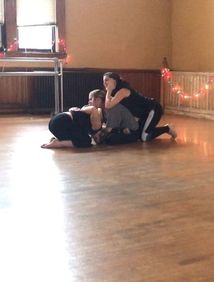 With the New Year just days away, it is time to get ready for National Choreography Month (NACHMO)! I am super excited to be setting a piece on Monkeyhouse for NACHMO Boston. For anyone who is unfamiliar, the premise of NACHMO is to get people making choreography in January. The task is to create a new piece within the month. As one of Monkeyhouse’s Choreographic Mentees, I have been well prepared to take on this challenge, so I thought I would share a bit about what I have been doing so far, before the actual creating even begins. The most influential opportunity I have had so far is Musings. Monkeyhouse Musings are opportunities to play with choreographic ideas in an atmosphere free from pressure. I have both lead and participated in Musings that have resulted in all sorts of different creation. For the piece I will be making in January, I plan to build upon several of the ideas I started playing with in these musings. Also in musings, I have played with ideas that turned out to be not so great. This was just as valuable because, now I do not have to spend rehearsal time trying out ideas that I am not interested in using for this specific project. Musings are an ideal way to spend time before starting as well as during a specific choreographic process. The risk-free atmosphere of musings has been the best preparation for me to begin a rehearsal process. As I look forward to the beginning of making something new, I am grateful to have people who have done all of this before by my side. From applications to the non-movement parts of choreographing like set-design and costuming, Karen and Nicole are here for it. They have both participated in NACHMO before and have been new people in the professional dance world. So, if you are like me and are about to embark on the journey of creating a new dance, I would recommend that you take some time to consider what tools you can use to prepare for this journey. Obviously not everyone has the privilege of attending Monkeyhouse Musings, but you can do the next best thing. Practice making choreography in an environment that does not pressuring you to make something amazing. If that doesn’t work, watch someone else’s process. I have learned as much if not more from participating in a musing someone else has lead compared to what I have learned in the musings I have lead. Also, find someone who can be in it with you. I’m so lucky to get to work with Monkeyhouse, mostly because they are filled with different perspectives. Extra eyes are always good to have. I can’t wait to see all of the exciting new work that is made next month for NACHMO! Happy 2018! Photo by Paradise Photo. Graphic by Nicole Harris A conversation between the two choreographers for this years choreographic mentorship program; Elizabeth Powers and Elyssa Berg. EB: You just recently finished school at Roger Williams University this past May, what have you been up to since graduation? EP: I am currently living in Providence, RI and working as a teaching artist in a middle school where I work with teachers to integrate arts into the academic curriculum. I'm taking classes and dancing in various projects around the Boston and Providence areas. I'm also working on creating some new work that pushes me into a different mode of creating movement. EB: So now that you have a chance to pursue new ideas what are you finding yourself most interested in exploring as a choreographer? EP: As a choreographer a lot of my interests come from thoughts. I am really interested in people and how they work. I think that dance and movement facilitate exploration of these sorts of topics. I am also interested in exploring the possibilities of improvisation. I like to create improvisation scores that involve challenges or problems that have to be solved by doing the improvisation. Personally I use this method as a way to get myself to create movement that is different from what I usually do. I find that improvisation allows dancers to constantly be pushing the limitations of movement without getting stuck in a pattern, or at least provides the option of editing a score to create an escape from the pattern. I am also interested in using improvisation within the structure of a final piece. I get sick of doing the same thing all the time and am interested in the ways that a piece can be different every time that it is performed while it is still the same piece. EB: It sounds like you are trying to push yourself to constantly change and try new approaches and tools, where do you find most of your inspiration for these new ideas comes from? EP: A lot of my inspiration comes from watching dance. When I need to come up with an idea for a piece, going to see a good show always brings me into that mindset and gives me ideas to play with. I'm also inspired by relationships and observations throughout daily life. I find that the movement that is constantly occurring everyday is often as interesting as any movement that we classify as dance, when it's put in the appropriate context. EB: You are about to begin the process of creating a piece for NACHMO, as you start this process and other processes what would you say is your biggest challenge in creating a new work? EP: My biggest challenge when creating work is probably choosing what to focus on. I often have a lot of completely random ideas and so choosing which ideas to focus on is a challenge. I like to let ideas develop and pull my work in a certain direction, but before I can do that, I have to choose which ideas to give that power to. Sometimes I'll let a piece go in one direction for a while before deciding that isn't where it is supposed to go, so being open to giving a piece multiple chances to identify itself is important to me. EB: Do you have any plans for the near future? Are there any goals or things you would like to accomplish in the next five years or so? EP: Honestly the only thing that I know I still want to be doing in five years is dancing. I want to be creating and sharing work regularly. I want to work with populations who have varying abilities as well as share the power of movement with anyone who could benefit from it. I want to be moving in a different way than I am right now. There are so many different ways to move and in my 22 years of life I have just scratched the surface. EB: As you have had a long relationship with Monkeyhouse what would you say is your favorite part about working with the company? EP: I love that I get to work with people who are so willing to try and to support. I can go into a musing with a weird idea or a hand gesture and come out with something really interesting. Also working with people like Karen and Nicole who have been teaching me dance since I was a kid is amazing because I know that they won't hesitate to push me out of my comfort zone but they will also help me make sense of things when they seem to be going nowhere. So, my favorite part of working with Monkeyhouse is being able to work with a community of dancers who will accept crazy ideas and make something out of anything that they are given. |
Categories
All
Archives
April 2023
|
MONKEYHOUSE
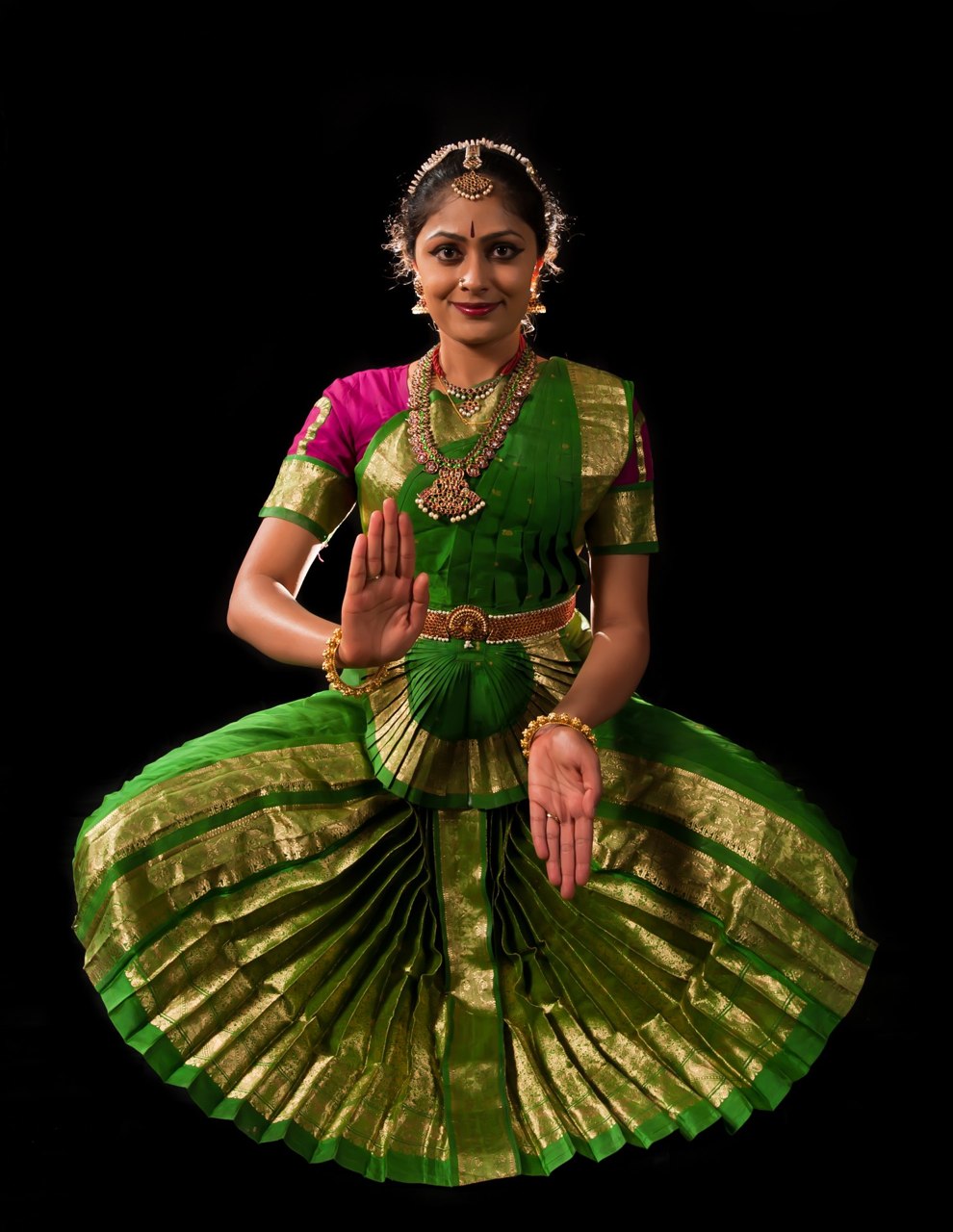
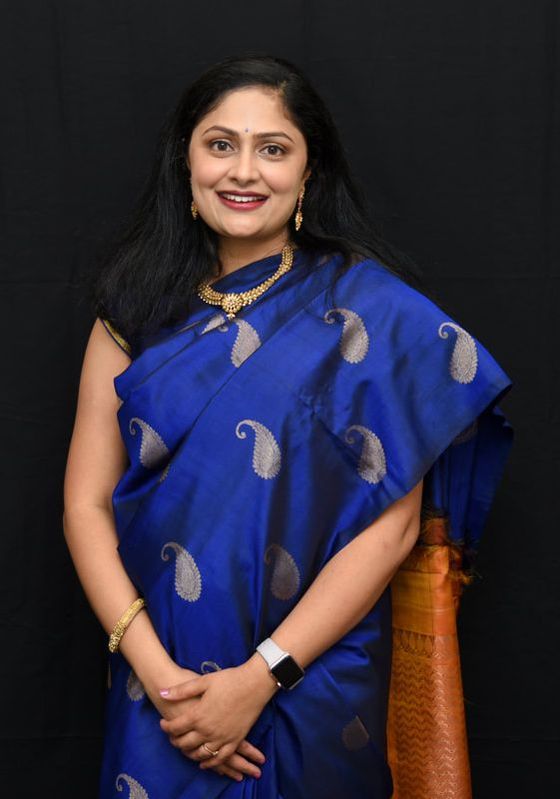
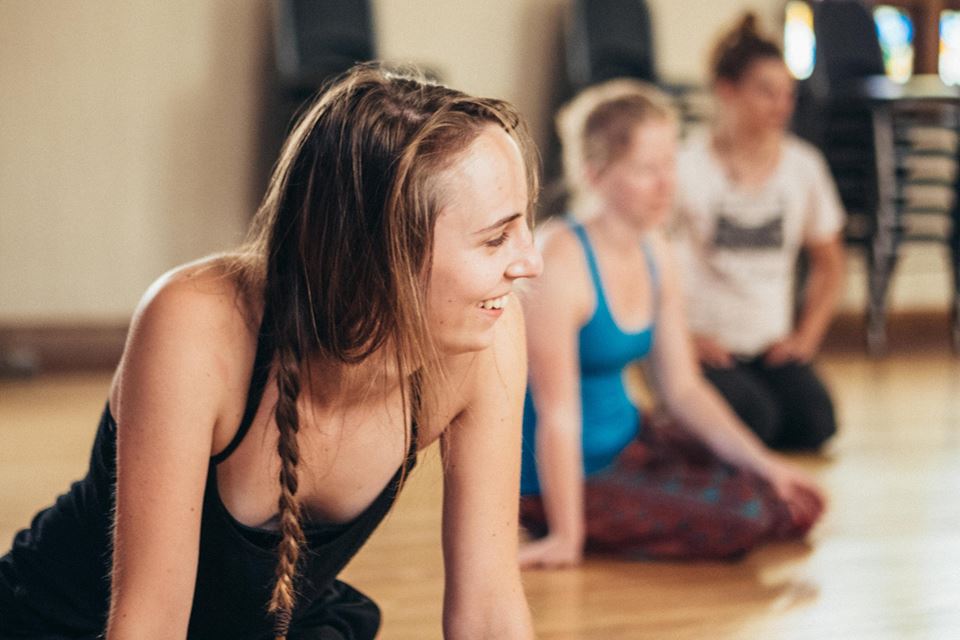
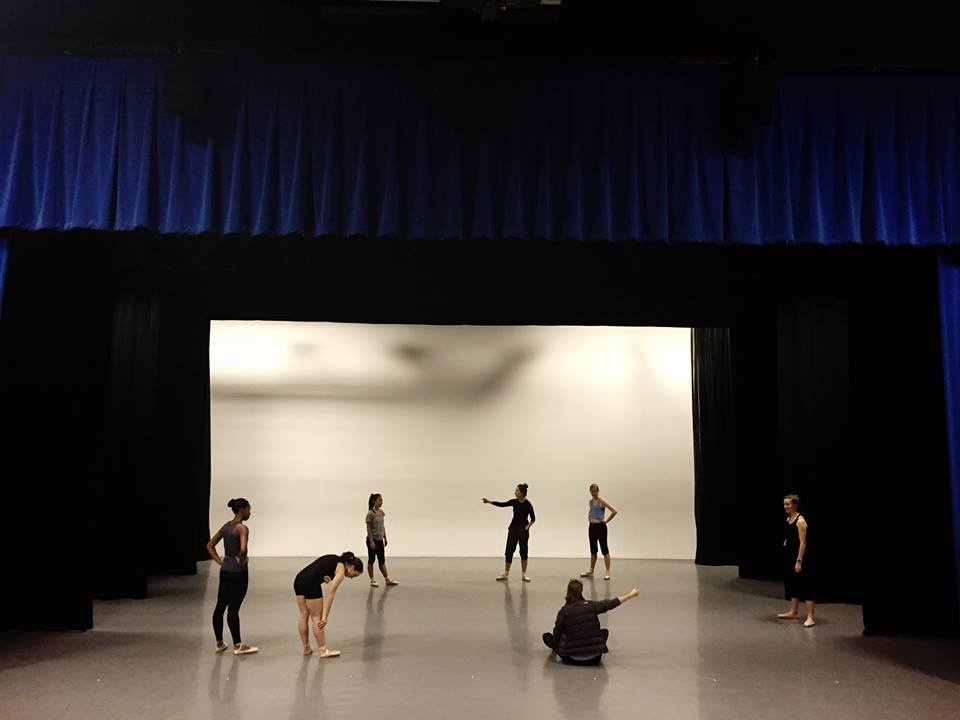
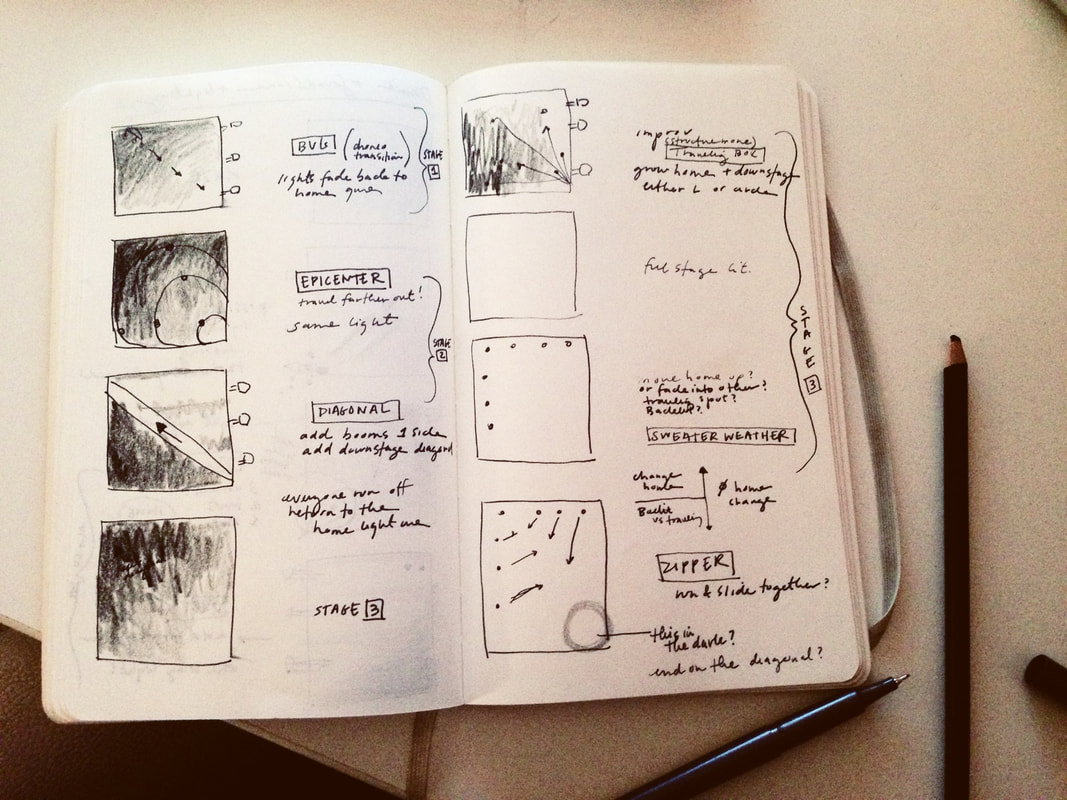
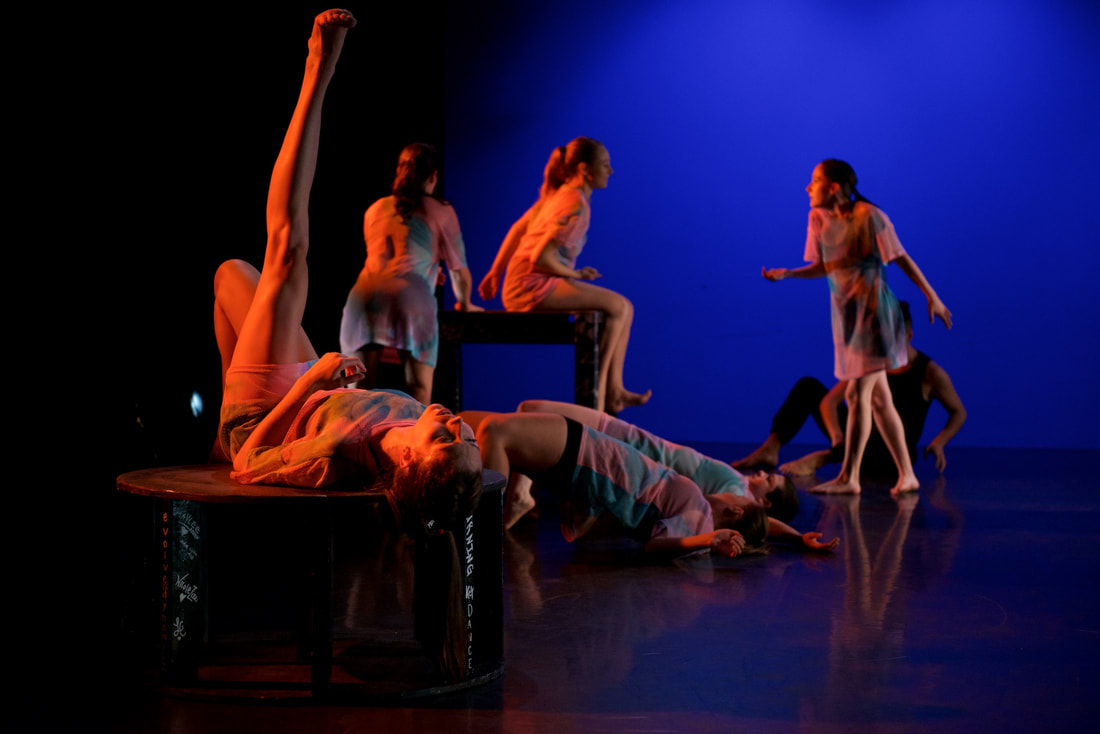
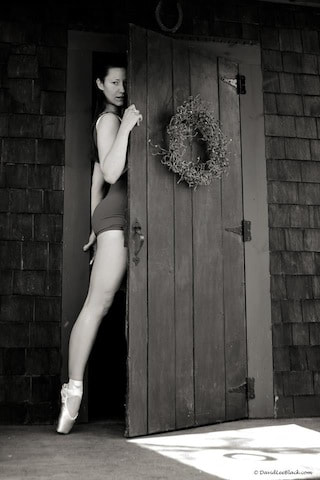
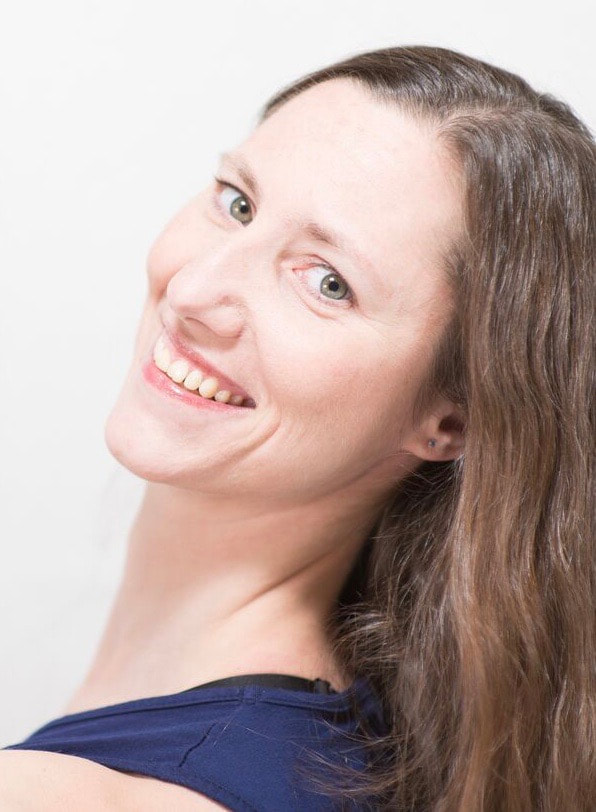
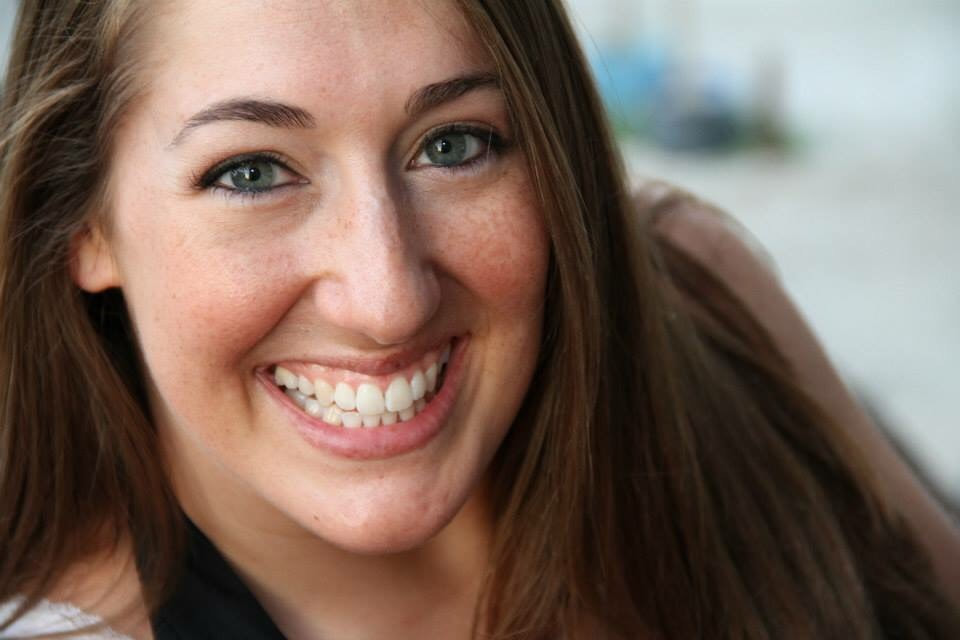
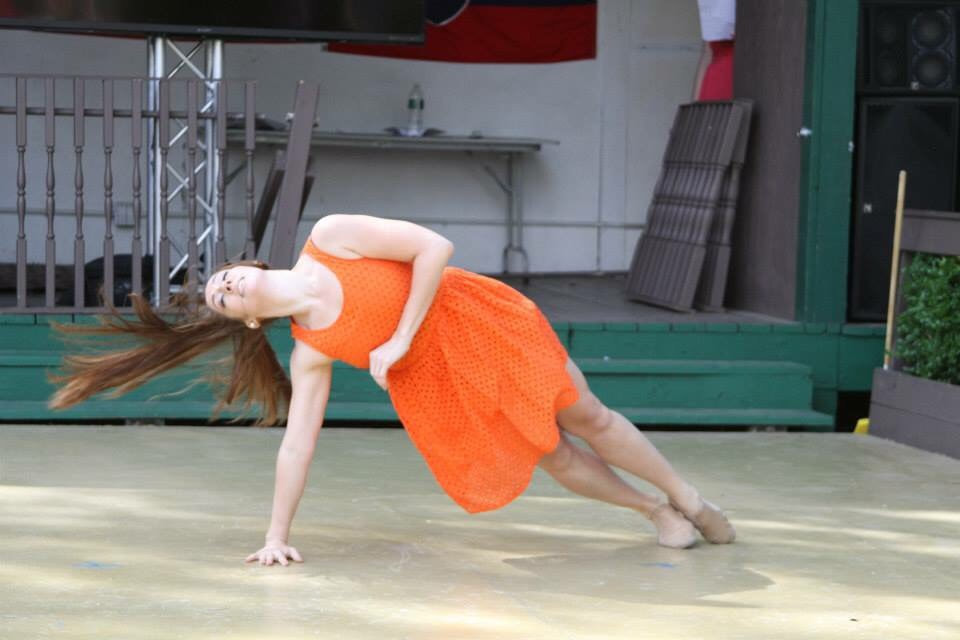
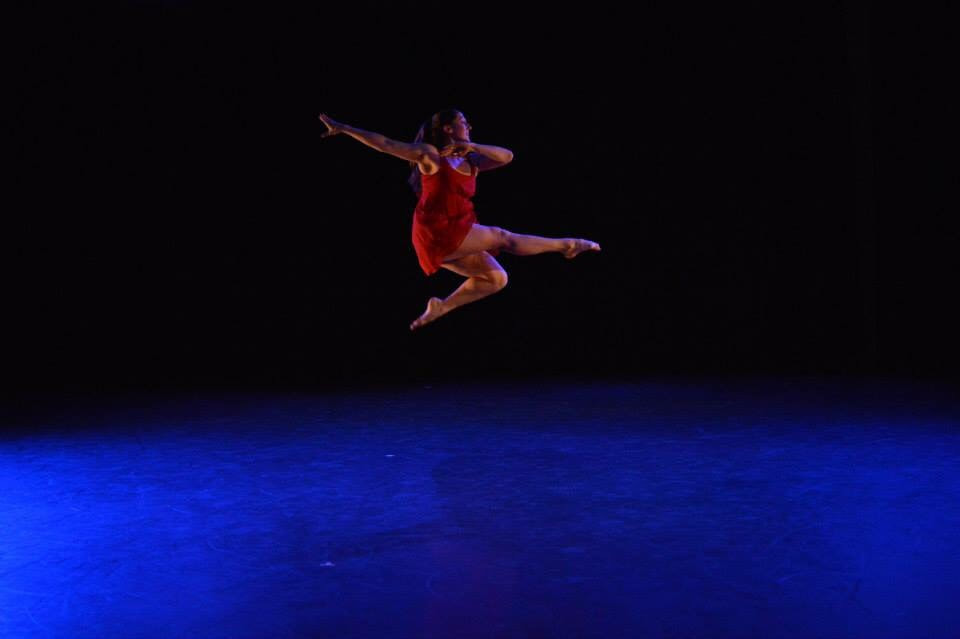
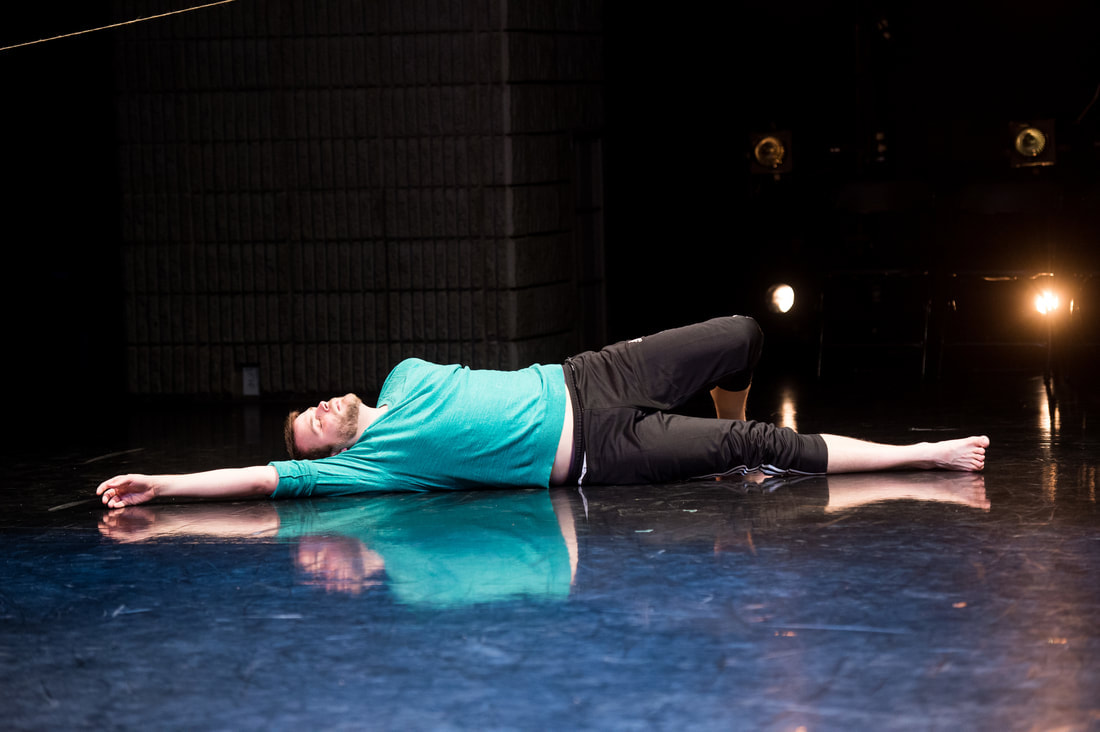
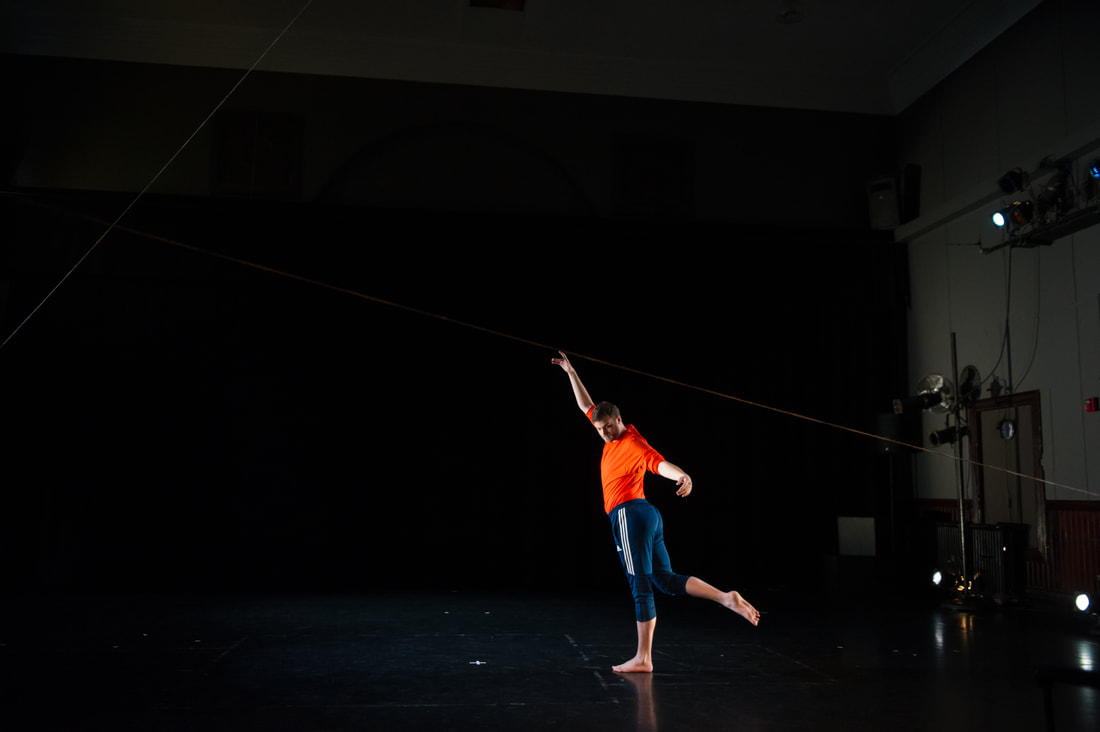
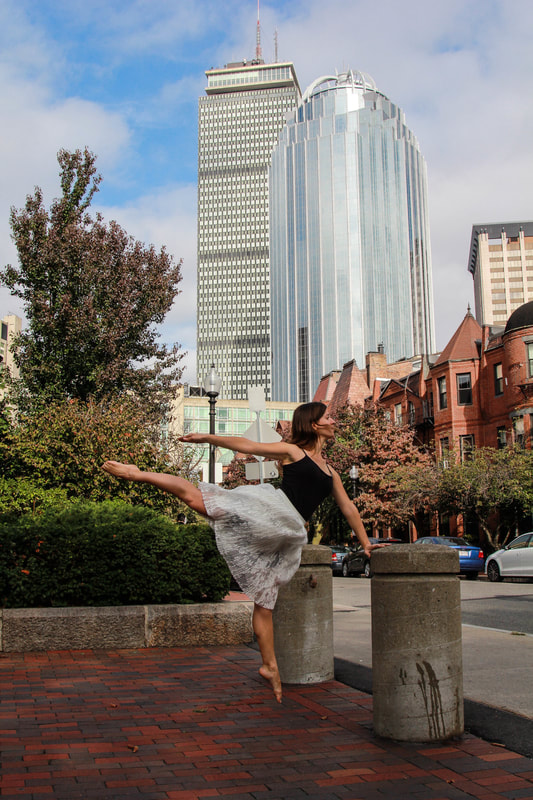
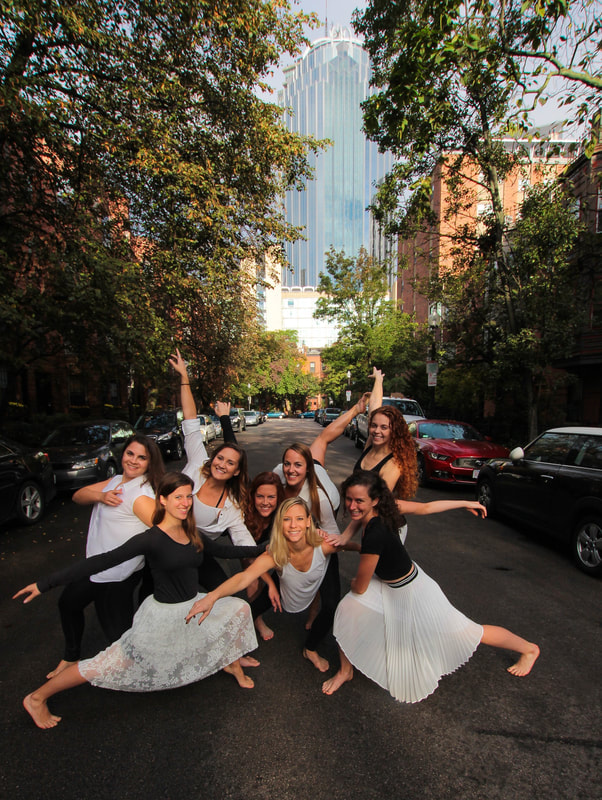


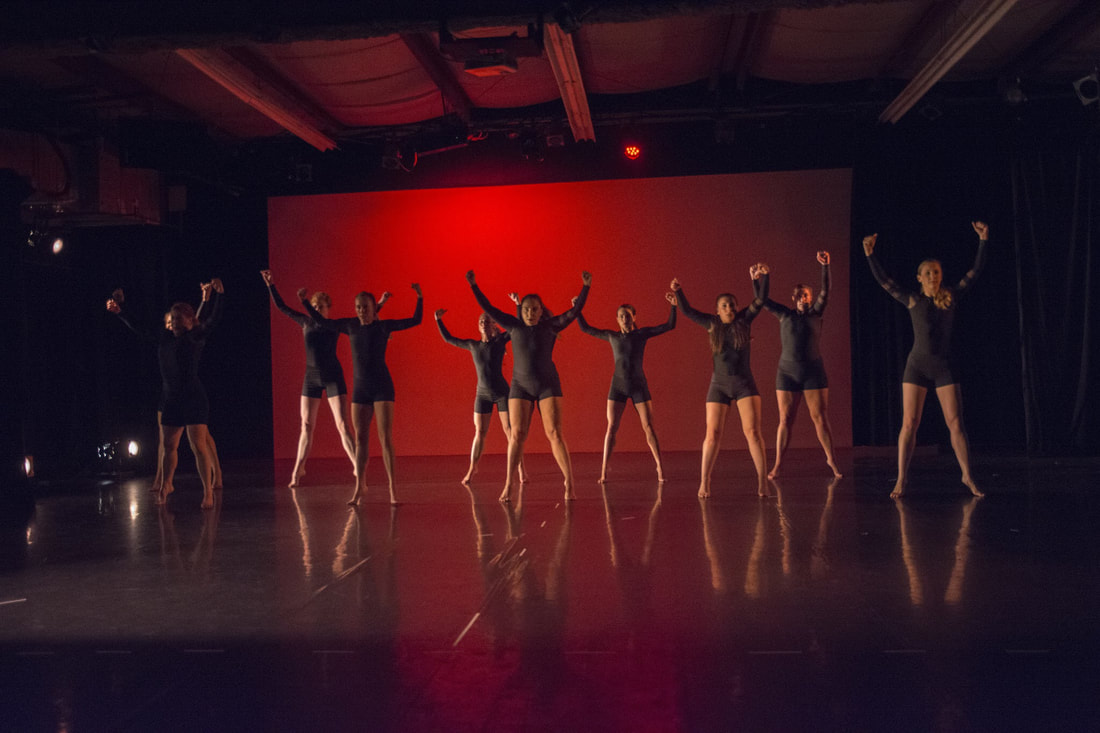
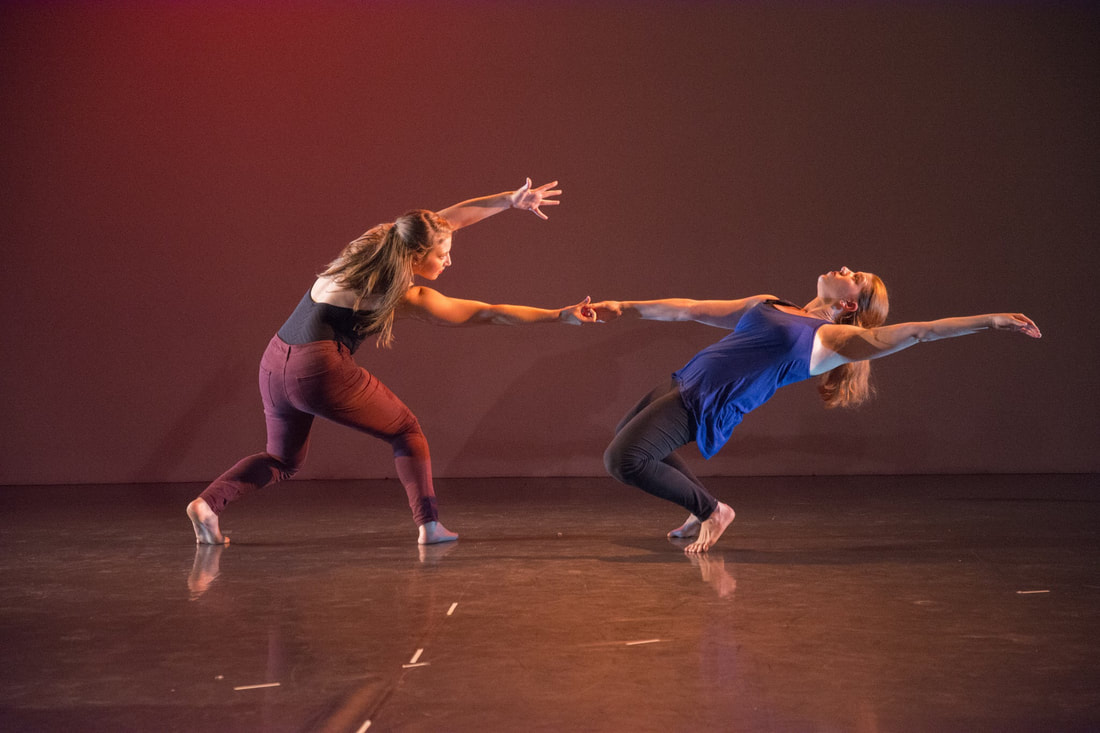
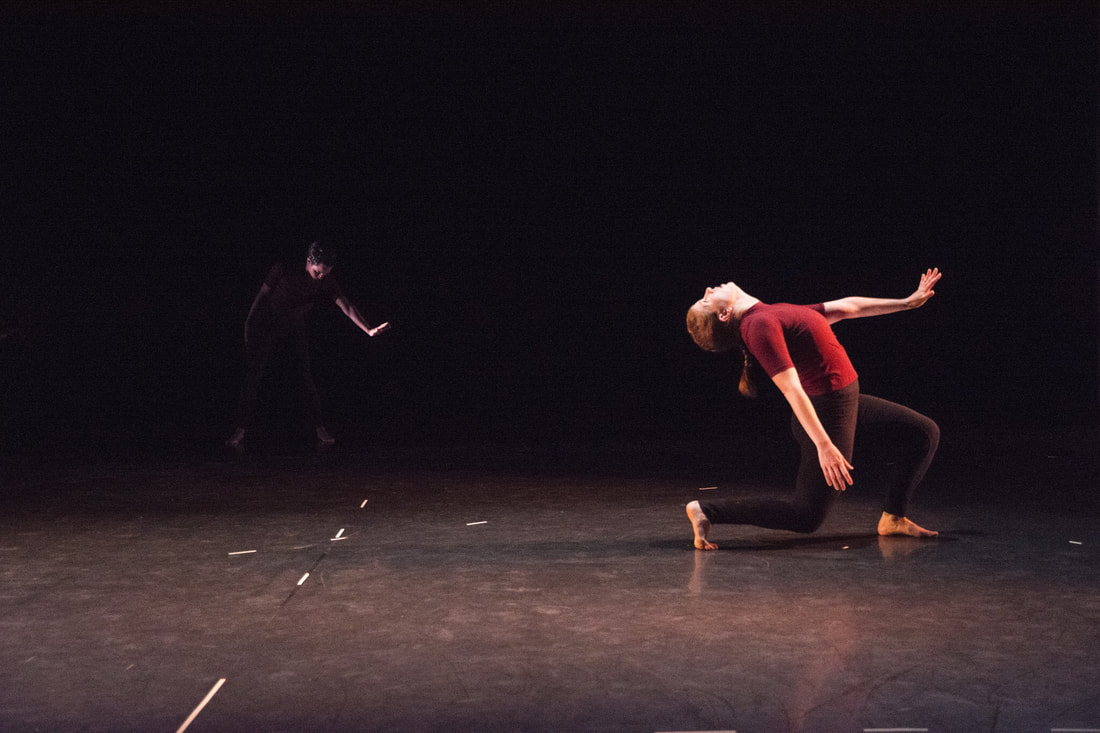
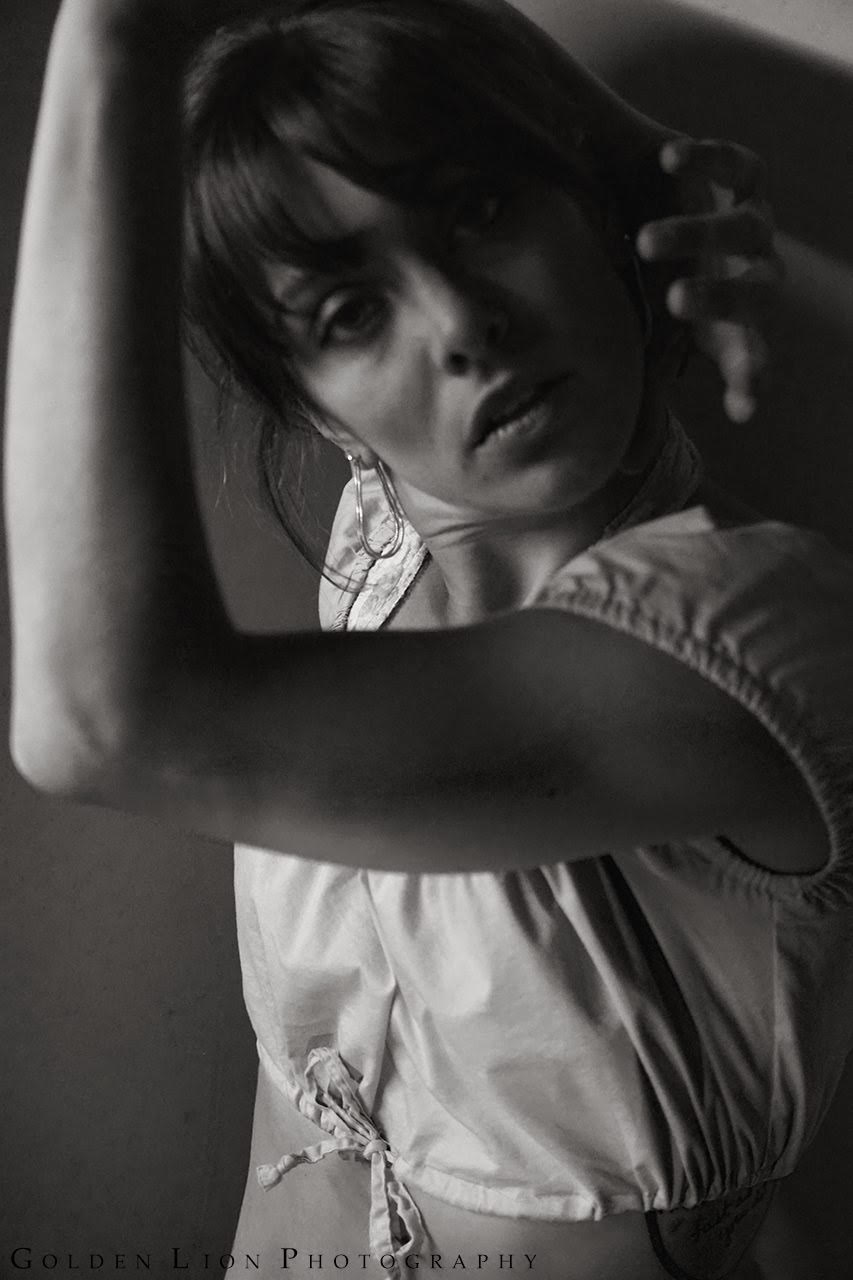
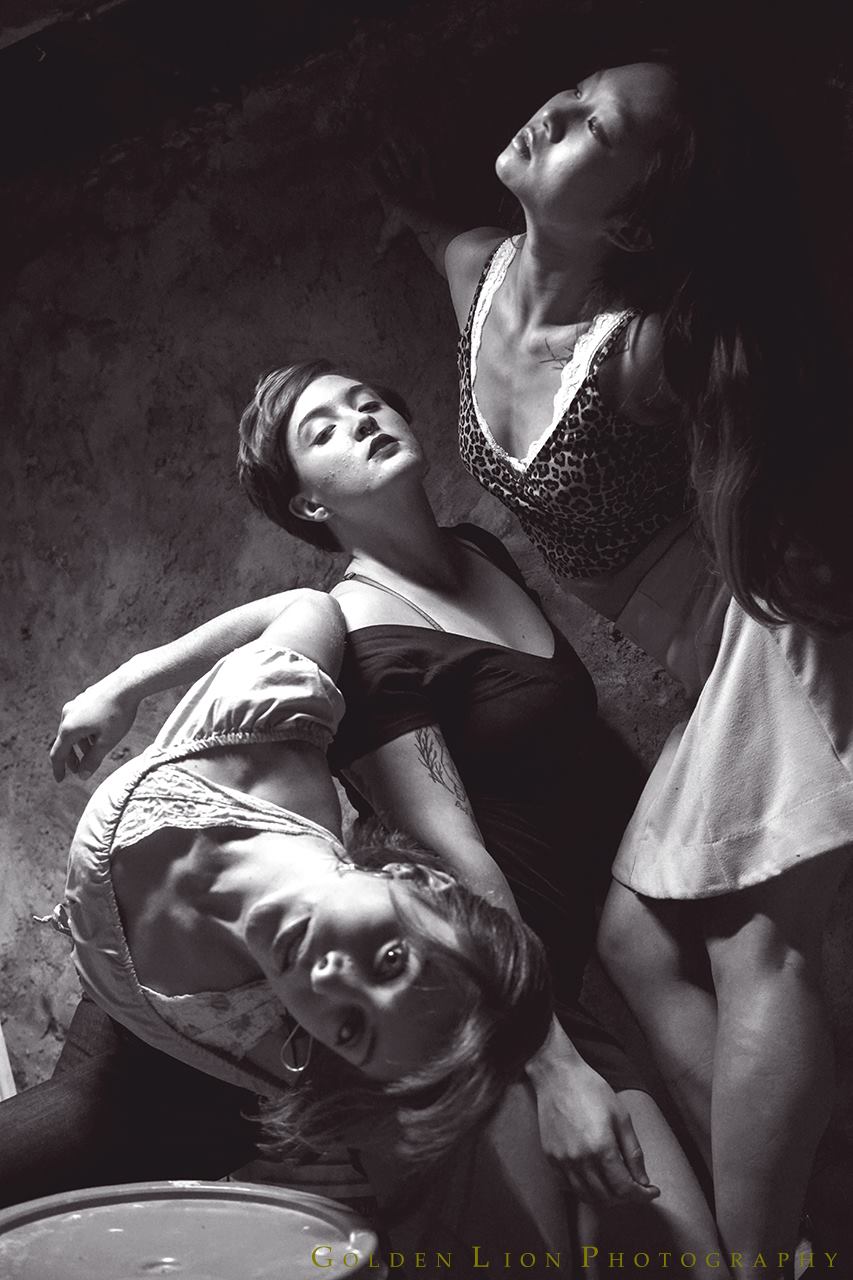
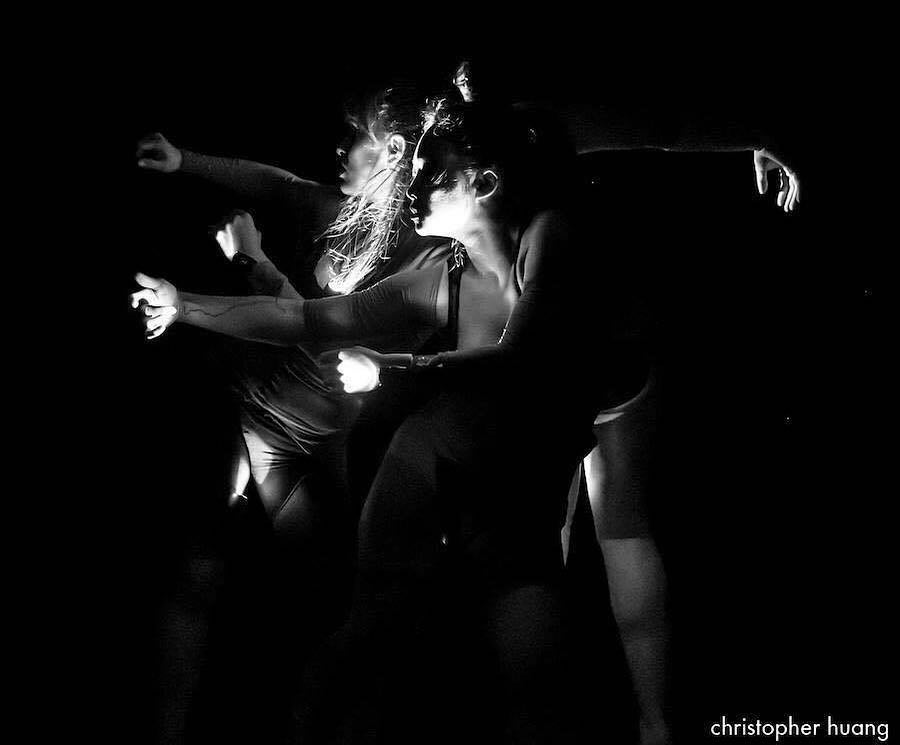
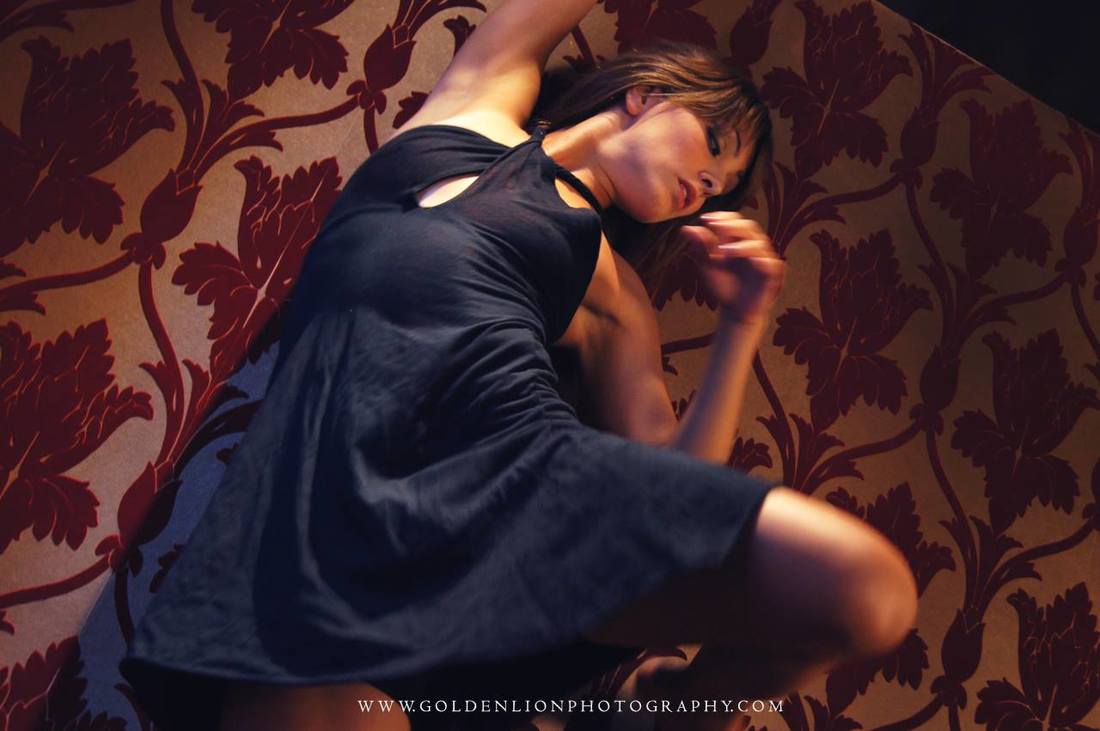
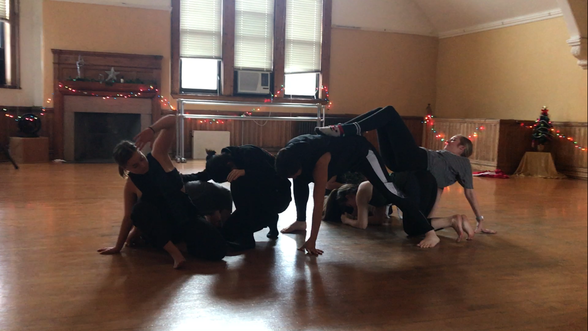
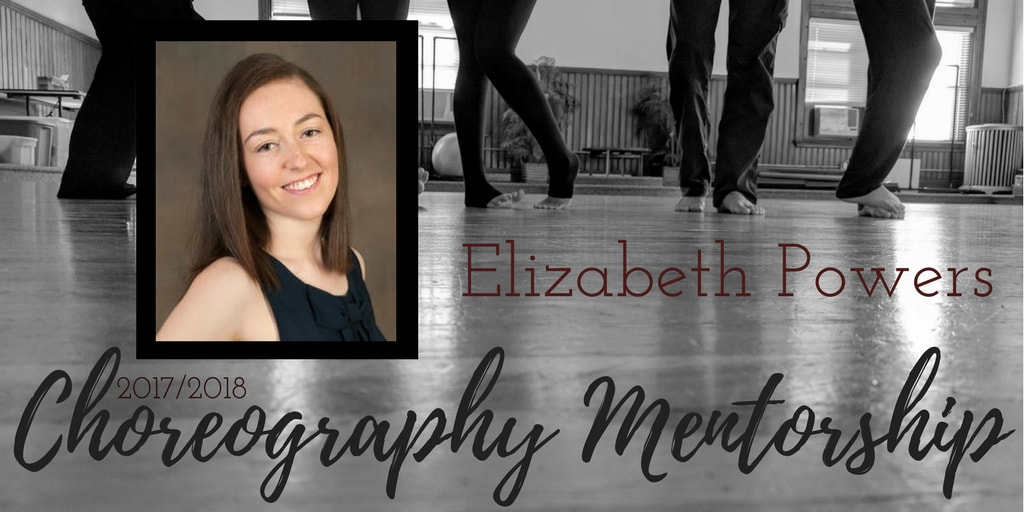
 RSS Feed
RSS Feed
